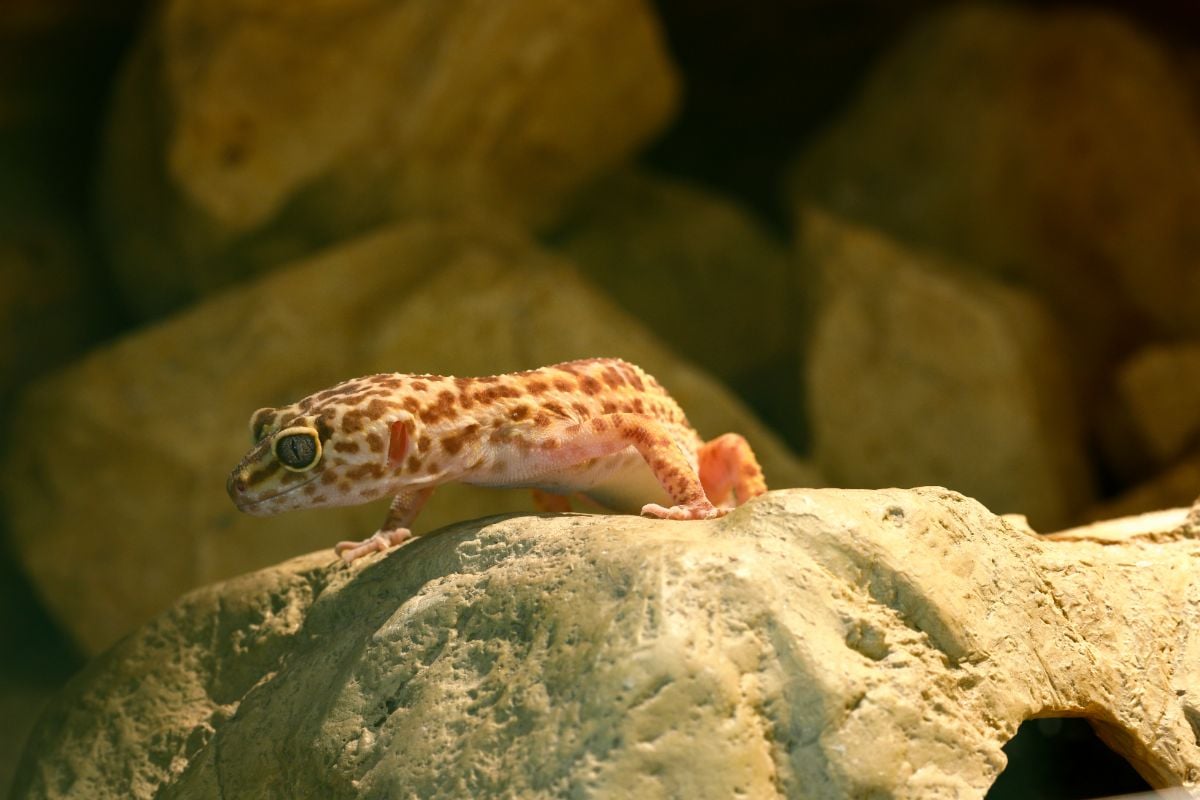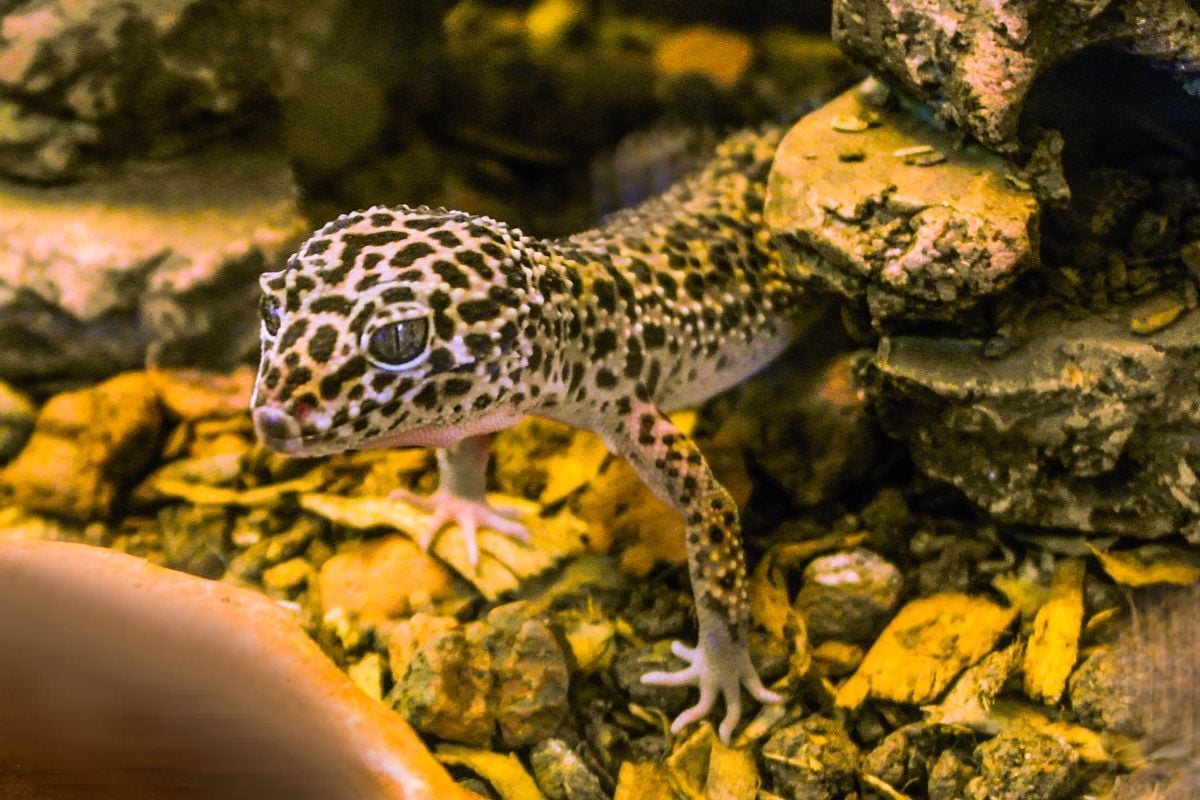Most pets are relatively easy to care for. When it comes to things like cats and dogs, you will know what conditions they find comfortable and what they need around them. However, leopard geckos are a little bit more complex than that. Lighting is critical to have in a leopard gecko habitat.

As they come from dry deserts and the grassland areas of India and the Middle East, lighting is something that is normally abundant. While it might not seem important, lighting is critical to the overall health of the leopard gecko. But what lighting should a leopard gecko have?
UVB is very common among gecko owners, but luckily – you do not necessarily need UVB lighting. A heat and lamp combination bulb is perfectly acceptable for a leopard gecko, but there’s a lot more to know than just this. Luckily, we’ve written this handy guide that explains everything you need to know.
We’re going to look at what lighting your leopard gecko might need and a whole host of other handy tips. So, if you’re ready to learn more – then read on for the answers!
Leopard Gecko Lighting
Even though leopard geckos are incredibly popular to have as pets, there’s still a lot of misconceptions and myths around what lighting they need. It’s good to know that leopard geckos lighting setup can be done easily in two main ways; UVV or heat bulb.
Remember, leopard geckos need heat and lighting during the day, but they only need heat at night – and this is pretty simple to achieve. Let’s take a look at this a little closer.
Heat Lamp And Night Light Source
The first option, and perhaps the best option, is to use a light and heat lamp combination bulb, which are sometimes referred to as basking bulbs. These are handy to use because they provide heat and lighting in the day, but it’s different at night.
During the night time, you can switch off the daylight bulb and this instigates a secondary heat source that keeps the tank warm, all of these are critical for your leopard gecko to remain healthy and happy. Generally, the preferred heat bulb is a ceramic bulb – but there’s nothing wrong with using a heat mat.
It’s important to know though that both the basking and ceramic bulb should be connected to your thermostat in order to control the overall temperature inside the tank. However, it’s not just for the leopard gecko’s benefit that the temperature is regulated.
It’s also to prevent any overheating and it also shuts off any elements that could potentially malfunction. Speaking of the heat lamp, it’s also a good idea to set it up to an automatic timer so you don’t need to remind yourself to keep switching the elements on and off every day.
UVB Light And 24-Hour Heat Source

Your other option is to go for a light-only bulb. These lights are also referred to as full spectrum or UV bulbs, and these are only used to provide daylight conditions. Unlike the previous bulb in our guide, they do not provide any heat. Therefore, if you choose this option, it’s critical to provide a separate heat source.
This heat source will provide warmth in the daytime and the night time, whereas the light will only remain on during the day. Many owners actually prefer this method because they only need to switch off the light at night time.
However, they do not have the luxury of automatic timers or anything like that, meaning it’s important to remind yourself to switch it off. You may also find that it’s easier to find a UVB light than it is to find a combination bulb, and this might also be a selling point for you.
Before we go on any further, let’s examine some of the myths and misconceptions that still exist about lighting and leopard geckos.
Myths And Misconceptions
So, let’s dive into some of these myths and misconceptions that need to be cleared up.
“Leopard Geckos Are Nocturnal”
While leopard geckos are more active during the night and prefer to rest and sleep in the daytime, they are not actually nocturnal. Nocturnal animals are only active once the sun has set. Leopard geckos on the other hand are busy in the night and and in the early morning hours, as the sun rises and sets. As a result, this makes them crepuscular.
“Leopard Geckos Don’t Need Daytime Lighting”
Leopard geckos need a daylight cycle so they can easily regulate their own circadian rhythms – much in the same way that humans do. This allows them to plot their own sleeping patterns and active hours.
This is important as during their resting hours in the daytime, they bask in the light and digest their food, along with storing their energy for later use.
“Leopard Geckos Don’t Need UVB Lighting”
Okay, so this is a tricky one. While technically leopard geckos don’t need UVB lighting to survive, UVB lighting does benefit them immensely.
It has been said that leopard geckos who are exposed to UVB lighting for 2 hours a day have a higher vitamin D level. Much like humans, vitamin D helps leopard geckos with their bones and blood. It can also help to promote healthy scales.
So… Do Leopard Geckos Need UVB Lighting?
As we said, technically they don’t need UVB to survive. However, we would strongly recommend it so they have the additional health benefits. Not only this, but as we previously alluded to, UVB lighting is quite easy to find.
Final Thoughts
And that’s everything you need to know about leopard geckos and UVB. Just remember that while they don’t need UVB, it’s strongly recommended. We hope you have found this guide useful and you are better placed to give your leopard gecko a happy home!
- Can Leopard Geckos Eat Silkworms? - March 11, 2024
- Do Leopard Geckos Climb? - March 4, 2024
- Do Leopard Geckos Bask? The Answer Will Surprise You - February 21, 2024
